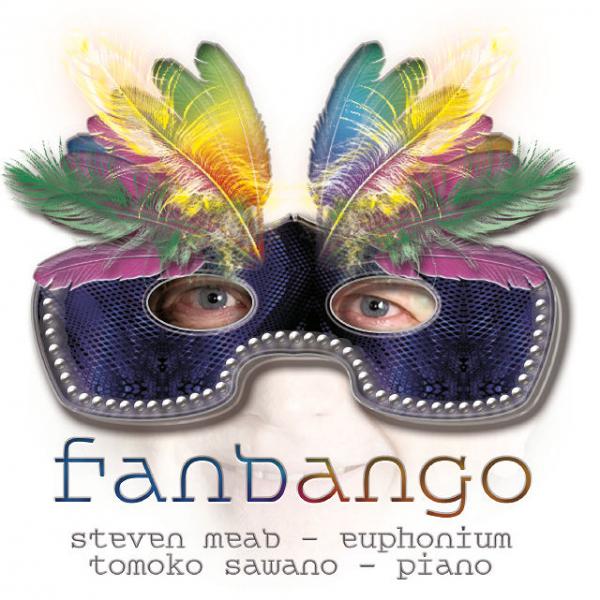|
|
Concertino No.2 - Charles Gauchet - Euphonium and Piano
|
£18.95
Reference: SMBPC2
Stock:  In stock In stock
| |
|
Concertino No.2 - Gauchet
PROGRAM NOTES
Charles Gauchet (1863—1922) was born in Liege and studied cornet at the conservatory in the class of Dieudonne Gerardy between 1880 and 1888. He won a first prize for fugue in the class of Jean-Théodore Radoux and a first prize for harmony in the class ofJoseph Delsemme and Sylvain Dupuis. Afterwards he became a teacher in a primary school and at the normal school in Liege. He was a member of the orchestra of the Theatre Royal and from 1890 to 1896 he was assistant in Gerardy's class. He conducted the Harmonie des Orphelins for over thirty years. In addition to the opera Else’a, he mainly composed works for brass, including Petit pie‘ce dans Ie style ancien (1893) for trumpet and a Concertina in fminor (1889) for trumpet and piano and a Concertino for horn. For the six-valved trombone, he composed a Romance with piano accompaniment and the well—known (Premier) Concertino with string quintet (or piano) accompaniment and a second Concertina. It was composed for the 1890 competition and dedicated to Emile Daloze, trombone teacher at the Liege conservatoire. The version with piano accompaniment was published in Liege by Veuve Léopod Muraille and the parts for string quintet were found in the archives of the Antwerp conservatoire. The Concertino became hugely popular and was used as test piece in Ghent (1892), Brussels (1894) and Antwerp (1895). Jules Blangenois (teacher at Brussels conservatoire) made a version with wind band or fanfare band accompaniment. It was soon followed by a second Concertino in a more romantic mood. A copy of the original version for trombone and piano is preserved in the library of the Antwerp conservatoire. Both concertinos by Gaucet follow the pattern of a three-movement concerto (fast-slow-fast) and remind us of a more romantic style and language in the style of the Russian national school. Both concertinos (although sadly neglected and unknown) could easily be compared with the much admired Trombone Concerto by Nicolai Rimski-Korsakov composed in 1877. The core of both concertinos is the slow movement which reminds us of the music of Camille Saint Saens and the era of salon music.
to be heard:
Complete recording: Anthology of Flemish Band Music volume 6 - Une soirée musicale chez Adolphe Sax - Glenn Van Looy (euphonium), Geert Callaert (piano)
Lost Treasures - Glenn Van Looy (euphonium), Geert Callaert (piano)
Duration 10 minutes
Difficulty 4/6
sSpplied with piano part and solo parts in TC, BC and BC in Bb
|
|
Concertino No.2 - Charles Gauchet - Euphonium and Piano
|
£18.95
Reference: SMBPC2
Stock:  In stock In stock
| |
|
Concertino No.2 - Gauchet
PROGRAM NOTES
Charles Gauchet (1863—1922) was born in Liege and studied cornet at the conservatory in the class of Dieudonne Gerardy between 1880 and 1888. He won a first prize for fugue in the class of Jean-Théodore Radoux and a first prize for harmony in the class ofJoseph Delsemme and Sylvain Dupuis. Afterwards he became a teacher in a primary school and at the normal school in Liege. He was a member of the orchestra of the Theatre Royal and from 1890 to 1896 he was assistant in Gerardy's class. He conducted the Harmonie des Orphelins for over thirty years. In addition to the opera Else’a, he mainly composed works for brass, including Petit pie‘ce dans Ie style ancien (1893) for trumpet and a Concertina in fminor (1889) for trumpet and piano and a Concertino for horn. For the six-valved trombone, he composed a Romance with piano accompaniment and the well—known (Premier) Concertino with string quintet (or piano) accompaniment and a second Concertina. It was composed for the 1890 competition and dedicated to Emile Daloze, trombone teacher at the Liege conservatoire. The version with piano accompaniment was published in Liege by Veuve Léopod Muraille and the parts for string quintet were found in the archives of the Antwerp conservatoire. The Concertino became hugely popular and was used as test piece in Ghent (1892), Brussels (1894) and Antwerp (1895). Jules Blangenois (teacher at Brussels conservatoire) made a version with wind band or fanfare band accompaniment. It was soon followed by a second Concertino in a more romantic mood. A copy of the original version for trombone and piano is preserved in the library of the Antwerp conservatoire. Both concertinos by Gaucet follow the pattern of a three-movement concerto (fast-slow-fast) and remind us of a more romantic style and language in the style of the Russian national school. Both concertinos (although sadly neglected and unknown) could easily be compared with the much admired Trombone Concerto by Nicolai Rimski-Korsakov composed in 1877. The core of both concertinos is the slow movement which reminds us of the music of Camille Saint Saens and the era of salon music.
to be heard:
Complete recording: Anthology of Flemish Band Music volume 6 - Une soirée musicale chez Adolphe Sax - Glenn Van Looy (euphonium), Geert Callaert (piano)
Lost Treasures - Glenn Van Looy (euphonium), Geert Callaert (piano)
Duration 10 minutes
Difficulty 4/6
sSpplied with piano part and solo parts in TC, BC and BC in Bb
We use cookies to facilitate the usage of our online shop. You are able to turn off your cookies through your browser options, but this will have a negative effect on the functionality of our website on your computer. Cookies are small text files that are placed on your computer by websites that you visit or certain emails you open. They are widely used in order to make websites work.
Read more Close message.


















 In stock
In stock